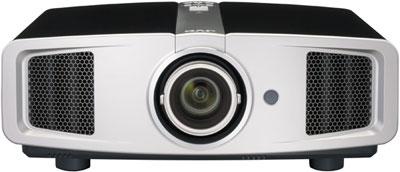JVC DLA-HD1 1080p D-ILA Front Projector

 Turf battles in the 1080p front projector market have really heated up since Sony introduced its $5,000 LCoS-based SXRD model last fall. Since then we've seen LCD projectors in that price range arrive from Panasonic, Epson, and Mitsubishi, while Optoma and BenQ have rolled out single-chip 1080p DLP projectors for less than $10K. Another company angling for a piece of the budget-1080p action is JVC. Its new DLA-HD1 projector employs a proprietary version of LCoS called D-ILA (Direct-drive Image Light Amplifier).
Turf battles in the 1080p front projector market have really heated up since Sony introduced its $5,000 LCoS-based SXRD model last fall. Since then we've seen LCD projectors in that price range arrive from Panasonic, Epson, and Mitsubishi, while Optoma and BenQ have rolled out single-chip 1080p DLP projectors for less than $10K. Another company angling for a piece of the budget-1080p action is JVC. Its new DLA-HD1 projector employs a proprietary version of LCoS called D-ILA (Direct-drive Image Light Amplifier).
The JVC DLA-HD1 1080p D-ILA front projector's basic feature set is similar to much of its competition's. A 200-watt UHP lamp can be set for high or normal output, depending on ambient light conditions. The 2x zoom lens has a 1.4:1-2.8:1 throw ratio, giving you fairly wide leverage for positioning the projector - with a 100-inch (diagonal) screen, it can be set up anywhere from 9 to 18 feet away. And along with zoom and focus adjustments, there's also horizontal and vertical lens shift.
The gloss-black and gunmetal gray DLA-HD1 has an attractive, streamlined appearance. The projector's inputs include two HDMI and component-, composite-, and S-video jacks, along with an RS-232C control port. The lack of a computer VGA input is something of an oversight. Its component-video jack doubles as an RGB input, but repeated attempts to sync up my laptop failed (you can plug a computer's DVI output into the HDMI inputs, however).













































